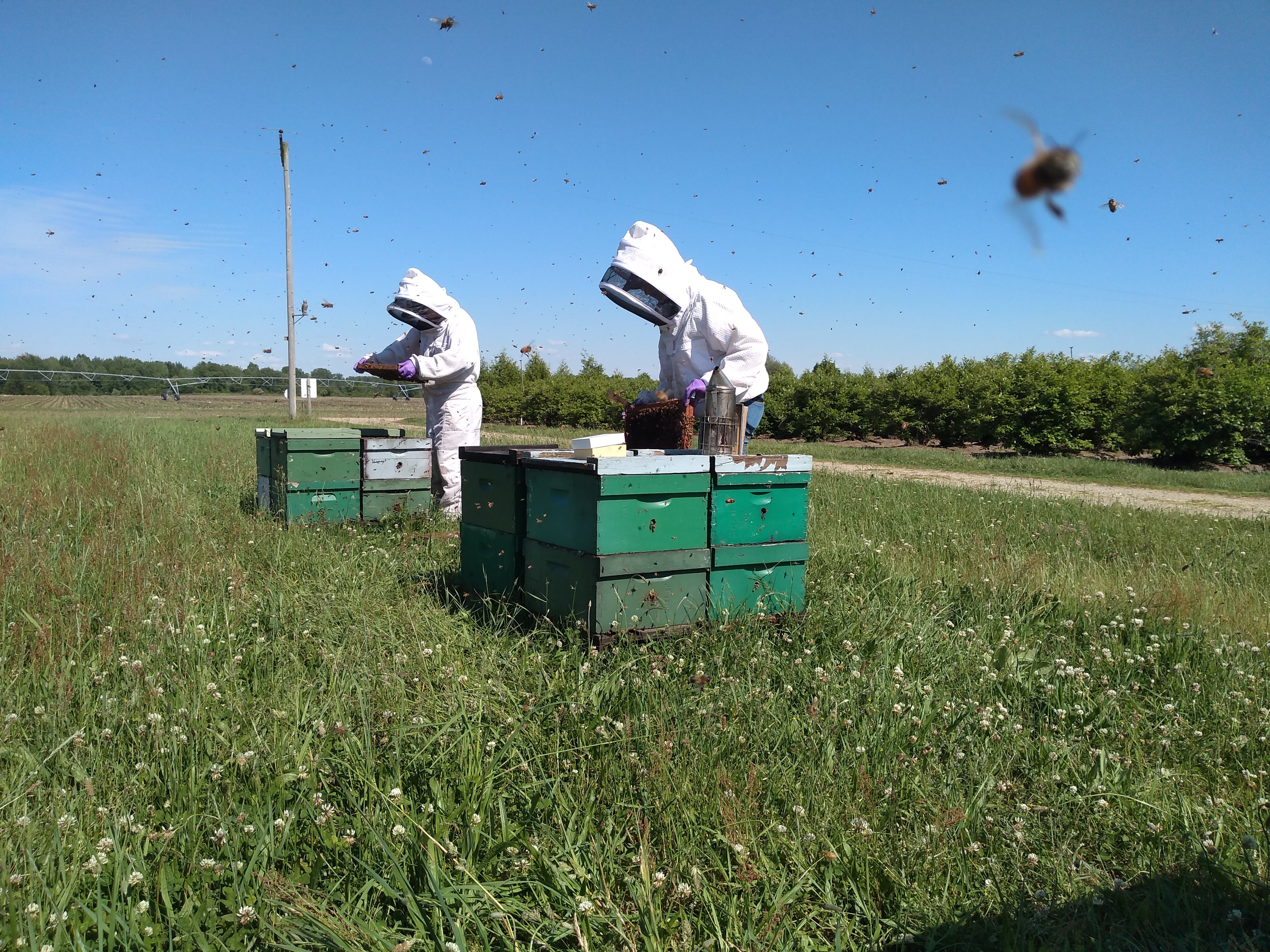MSU receives $2 million USDA grant to improve blueberry pollination
Michigan State University has received a four-year, $2 million grant from the U.S. Department of Agriculture’s Specialty Crop Research Initiative to improve blueberry pollination.

EAST LANSING, Mich. — Michigan State University has received a four-year, $2 million grant from the U.S. Department of Agriculture’s Specialty Crop Research Initiative to improve blueberry pollination.
The project is led by Rufus Isaacs, a professor in the Department of Entomology, and includes researchers from MSU, Oregon State University, the University of Florida, and Washington State University.
Combining research and outreach approaches, the team aims to improve the use of honey bees and wild bees by blueberry growers to produce optimal yields and profit. A board of stakeholders — including growers, beekeepers and outreach specialists — will help to guide the project.
The U.S. highbush blueberry industry, valued at more than $800 million, relies heavily on pollination for high yields of quality fruit. New cultivars and horticultural practices have increased the density of blueberry flowers per acre, but there has been little adjustment of recommendations on how to best manage pollination in these modern systems.
“There have also been changes in the bee world, with fewer feral honey bees and, in some regions, fewer wild bees,” Isaacs said. “This has increased grower dependence on renting managed honey bee hives to pollinate crops. Our project will lead to better recommendations for growers on hive stocking strategies needed for adequate pollination of new cultivars.”
In several regions across the country, there are extensive agricultural weather networks growers use to make pest management and horticultural decisions. Isaacs said these tools are not currently being used with blueberry pollination.
The project will use these existing networks to help growers predict when the pollination period will happen, and to warn growers of extreme conditions such as frost or high heat that might limit pollination.
“One of the main goals of the project is to combine expertise from plant breeders, horticulturalists, entomologists and online weather systems to develop an online pollination planner tool to help growers decide how best to pollinate their fields,” Isaacs said.

“Our goal is to help growers make decisions that will ensure they have honey bees in the fields at the right stocking density and at the right time, allowing for a high chance of good pollination. While there’s no 100% guarantee, we want to reduce the likelihood of poor pollination. This will be increasingly important as weather during bloom becomes less consistent.”
The project components in Michigan will be led at MSU by Isaacs and Meghan Milbrath, an assistant professor in the Department of Entomology, who will focus on honey bees. At Washington State University, Lisa DeVetter, an associate professor, will bring berry horticulture expertise, and Suzette Galinato, the assistant director of the IMPACT Center that focuses on Washington agriculture, will conduct economic analyses. At the University of Florida, Rachel Mallinger, an assistant professor, will study pollination in southern highbush blueberries. Andony Melathopoulos, an assistant professor of pollinator health and extension educator at Oregon State University, will lead the outreach aspects of the project, as well as continuing his work with DeVetter on assessing honey bee colony strength.
Researchers are in the process of recruiting students and postdocs and will be adding field technicians for the coming field seasons.
The Specialty Crop Research Initiative is part of the National Institute for Food and Agriculture.



 Print
Print Email
Email
